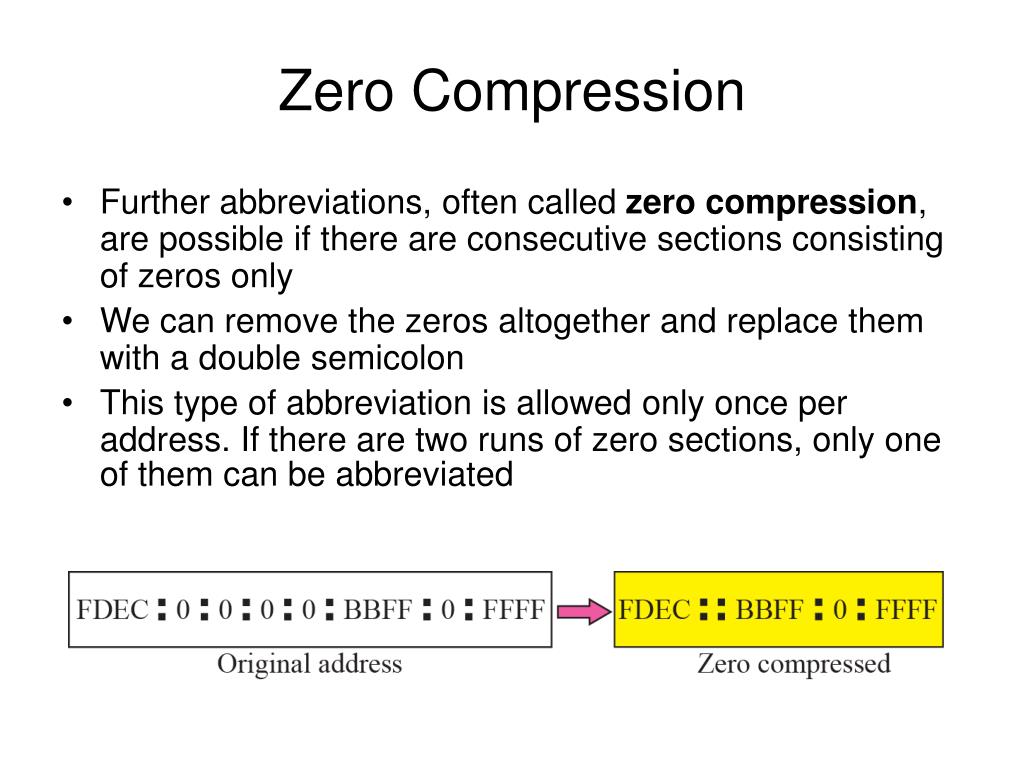

You can use the both zero and leading zero compression together by following the rules of these compression techniques. IPv6 address with Leading zero compression:Ģ001:1265:0:0:AE4:0:5B:6B0 Both Zero and Leading zero compression If you have all zero in a hextex you can represent this hextex with one zero. In leading zero compression you can eliminate the starting zero(s) from any hextex. Review the example for better understanding.Ģ001:1265::0AE4:0000:005B:06B0 IPv6 Leading Zero Compression In zero compression you can represent group of zeros by one double-colon (::) but you can perform this only once in your IPv6 address, means if you have two group of zeros in your IPv6 address you can use the double-colon only once. These compression rules and methods are as follow: IPv6 address consist of 8 hextets or parts which is normally difficult to remember, therefore there are some compression method, using compression techniques you can represent IPv6 in more understandable and simple way. Remove leading zeroes as that would not change the address as 0001 is same as 1 Replace.

This is a simple example of IPv6 address, you can see in below figure IPv6 address have eight hextets/parts and each hextet/part consist of 4 digits and of 16bits, while every digits is of 4bits that you can find from above table. IPv6 Compression Rules Exercise: Using the two rules of IPv6. Representation of all hexadecimal number/digits in binary form is as follows: Hexadecimal # IPv6 addresses are in hexadecimal form, so each digit is of four bits, IPv6 address’s consist of possible digits are 0 1 2 3 4 5 6 7 8 9 A B C D E F. Rule 3: When zeros (0s) are present in discontinuous pattern in IPv6 address notation, then at only one junction, the zeros (0s) are replaced with .IPv6 address is of 128 bits and represented in eight octets of 16 bits. This rule is also known as leading zero compression. However, you cannot apply this rule to trailing zeros (0s). Removing leading zeros (0s) does not have any effect on the value. If the field contains all zeros (0s), you have to leave one zero (0) remaining. But each block in which you do this, have at least one number remaining. Rule 2: Leading zeros (0s) in the 16 bits field can be removed. This rule is also known as zero compression. Rule 1: When there are continuous zeros (0s) in the IPv6 address notation, they are replaced with.


Therefore, several rules are developed to compress and shorten the IPv6 address for convenience of the user. It's a pain in typing all those hexadecimal characters in the IPv6 address. Consider a situation where you have to ping the expanded IPv6 address to check the network connectivity. But IPv6 addresses are lengthy and challenging to use. With time, people are shifting from IPv4 to IPv6 addresses and also perform IPv4 to IPv6 conversion.


 0 kommentar(er)
0 kommentar(er)
